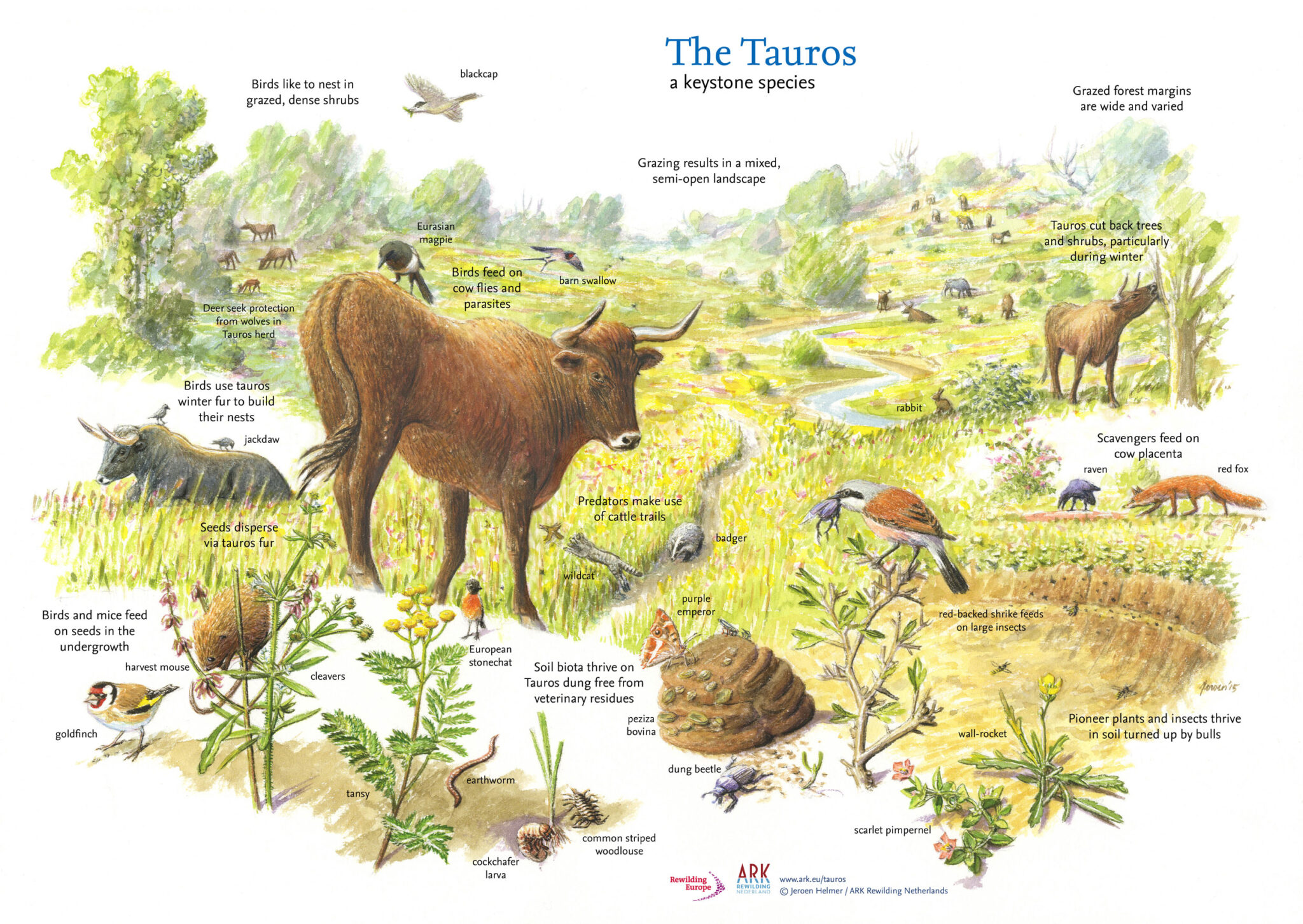Rewilding area
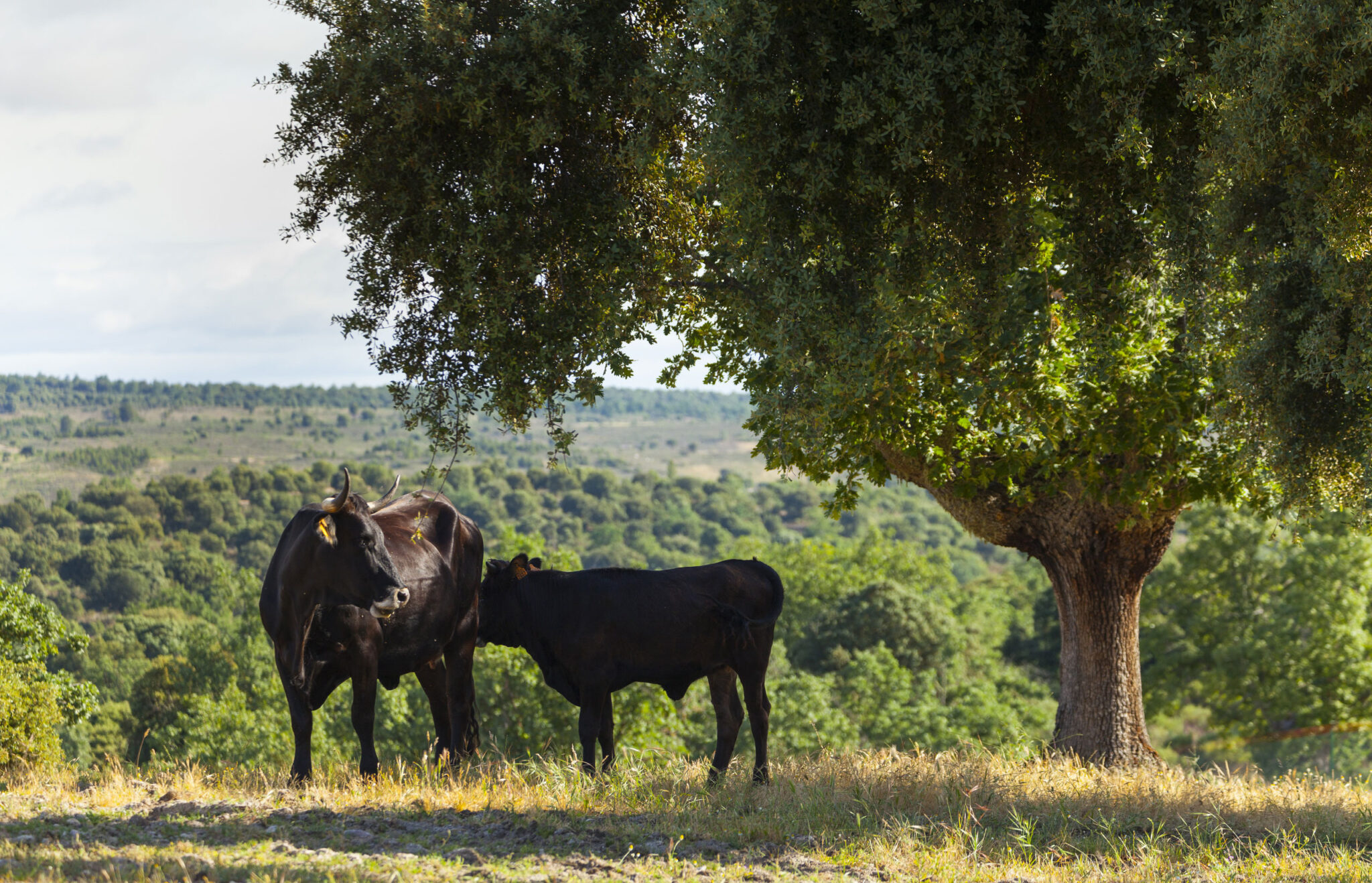
What are Tauros?
The tauros is a type of bovine that resembles aurochs, the wild cows from which today’s domestic breeds descend. Tauros were a keystone species for European biodiversity for hundreds of thousands of years. Although the aurochs became extinct in the 17th century, its genes are still present in various domestic cattle breeds. From the combination of this genetic material, this breed has been created, which looks and behaves just like its wild ancestors. The Taurus is a very strong animal that can reach 1,000 kilos and is adapted to life in the harsh climatic conditions of this landscape throughout the year.
Tauros and rewilding
The Tauros play as architects of the landscape and help make it more heterogeneous. Through grazing and trampling, they decrease the amount of biomass and clear up vegetation for many other species of animals and plants that need more light or an open place to grow. Their droppings attract insects and help fertilize the soil, thus restoring the nutrient circle and promoting plant growth and diversity. In addition to grass, they eat shrubs, bushes, branches, and bark, thus reducing forest mass and decreasing the risk and intensity of wildfires. Tauros are wild animals and are used to living in the wild, they do not need a shed or supplementary food. They are tame, but you will be able to observe them better and safely if you keep your distance.
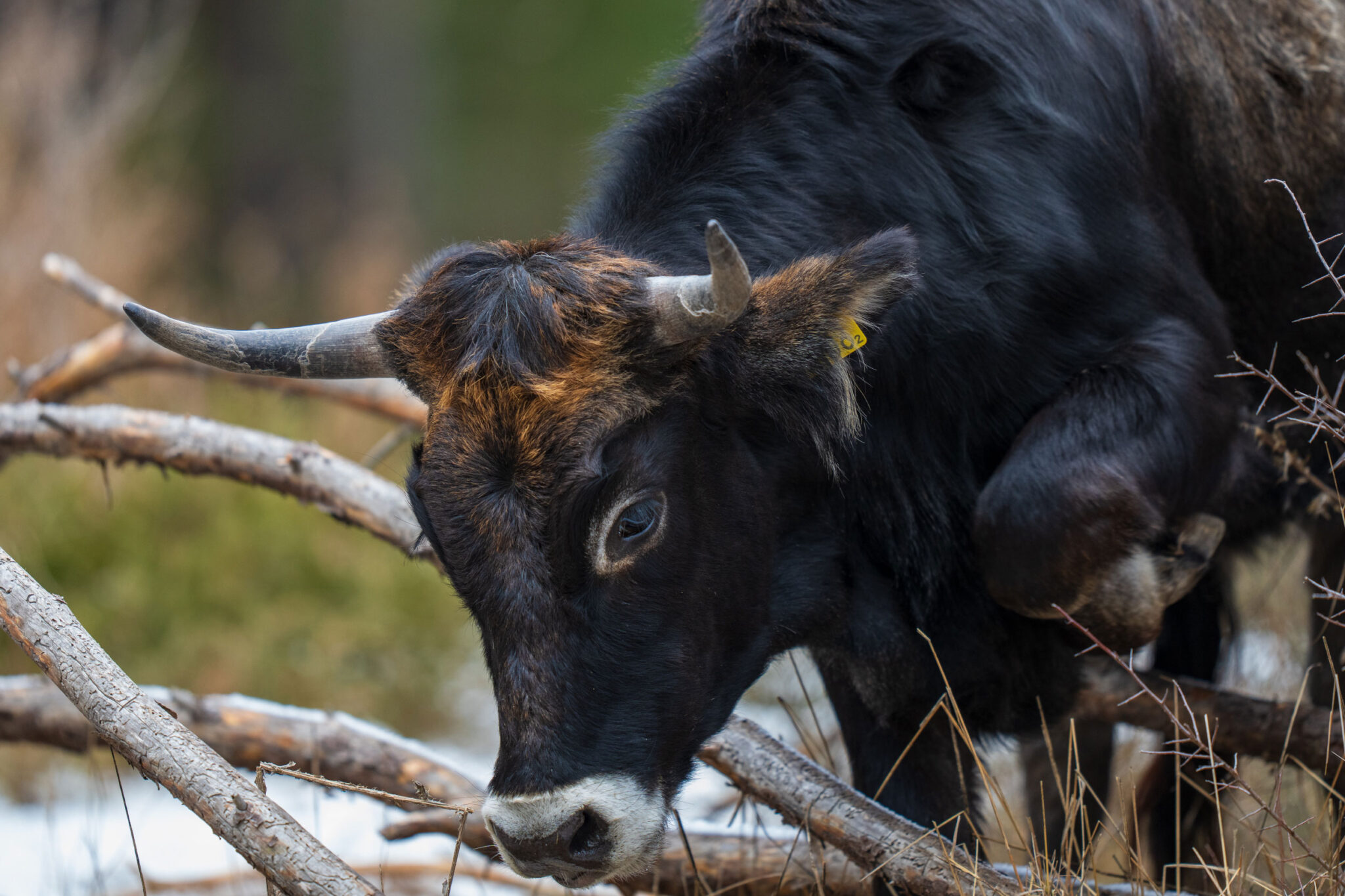
Tauros in Dehesa de Solanillos
There are only two herds of Tauros living in Spain and there are barely 500 specimens of this rustic cow in the whole world. The first Tauros herd to arrive in our country lives in Sierra de Albarracín, another region located within the Iberian Highlands. The one you can spot here arrived at the Dehesa de Solanillos in the spring of 2023 and have turned these mounts into an almost unique place to watch their impressive size and observe their behaviour, identical to that of primitive cows.
Precautions
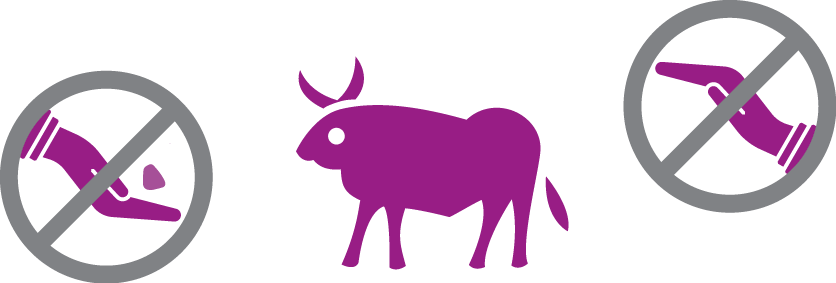
Do not touch or feed the animals
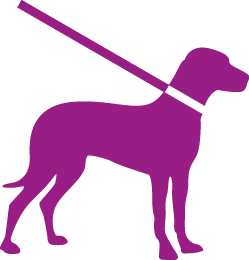
Keep your dog on a leash

Maintain a minimum distance of 50 meters
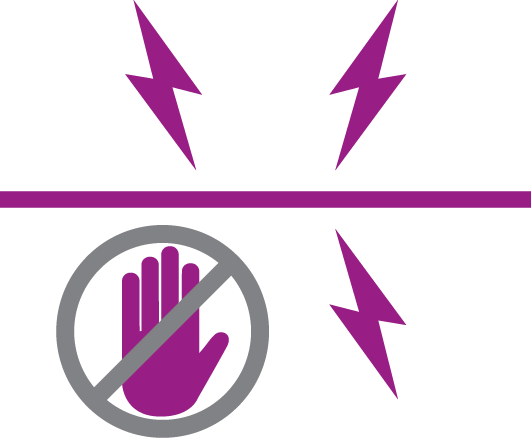
Danger, do not touch or pass the barriers
